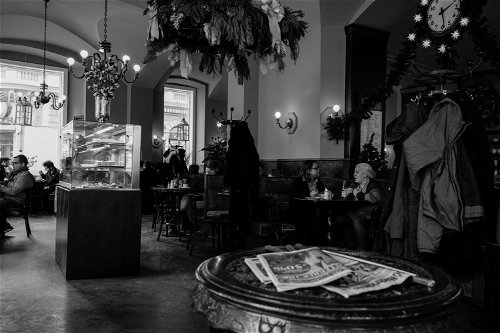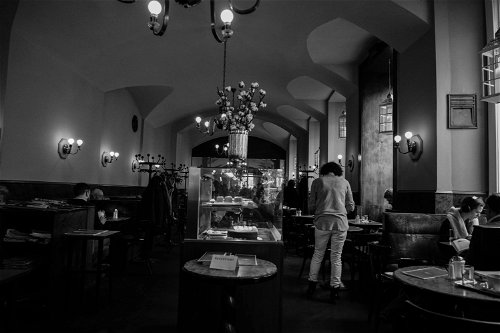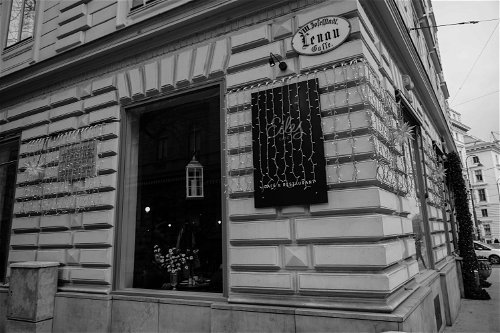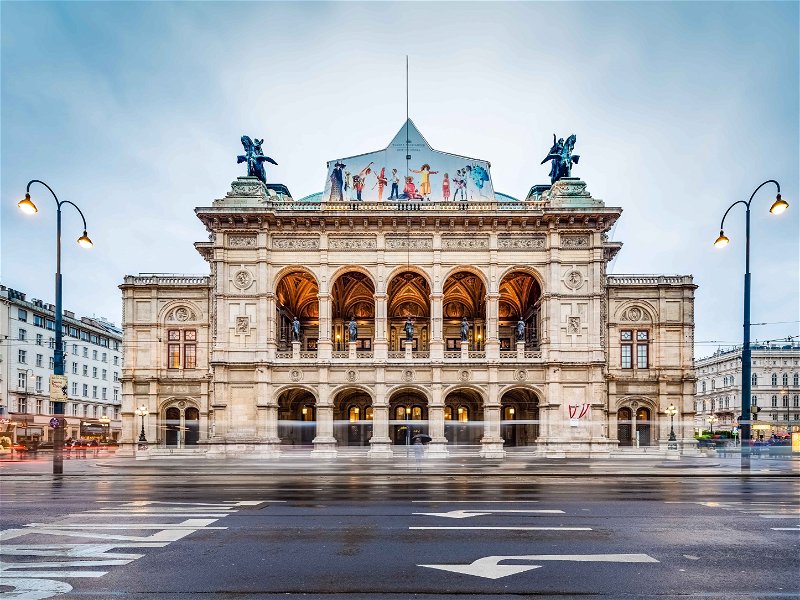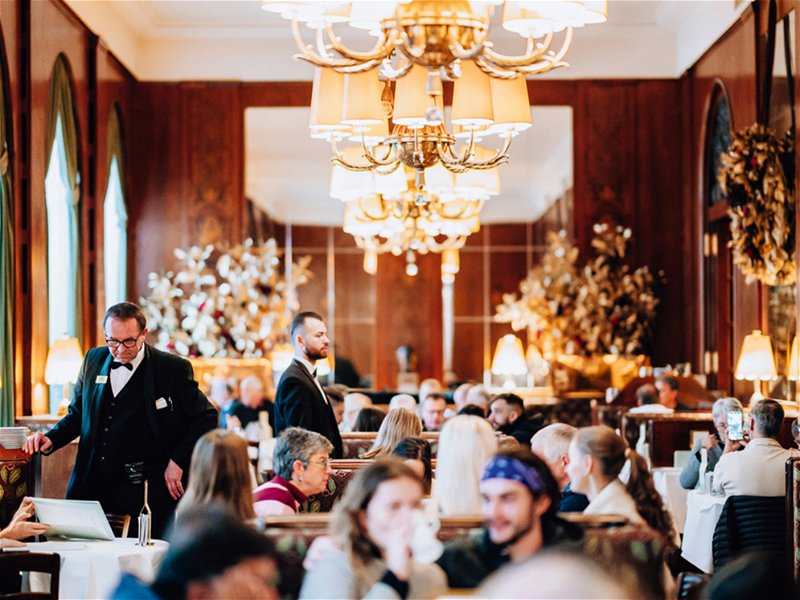"I go to the coffee house to escape myself"
Whether Peter Altenberg, Arthur Schnitzler, Stefan Zweig, Egon Friedell or Karl Kraus - all these poets had one thing in common: they loved Vienna's coffee houses. Friedrich Torberg knew exactly why: "The virus of intellectual stimulation thrived in smoke and mocha steam like nowhere else."
When the poet Peter Altenberg was once asked for his address, he replied: "Café Central, Vienna I." In fact, he stayed for the longest time in a small, cheap room in the "Hotel London" and later in the "Grabenhotel". However, he did not live there. His real home was Vienna's coffee houses. "If Altenberg isn't in the coffee house, he's on his way there," people used to say about him.
Not only Altenberg, but also many other artists made the coffee house their living room, their creative haven. "Literary schools and styles were born and discarded in the coffee house, new directions in painting, music and architecture originated in the coffee house," enthused the writer and passionate coffee house visitor Friedrich Torberg in his "Treatise on the Coffee House". And he continued: "Needless to say, each of these coffee houses has its own unmistakable style, jealously guarded note and atmosphere", wrote the creator of "Tante Jolesch".
This collection of anecdotes from Jewish life in the interwar period is a single ode to the coffee house, or as Torberg himself said: "Basically, this whole book is a book about the coffee house. Hardly any of the characters would be conceivable without the coffee house." This is precisely why Vienna was such a fruitful place for the Jewish author. Because in no other city in the world were there as many "literary cafés" as in Vienna at that time.
Torberg has also given a lot of thought to what a literary café actually is. Ultimately, he came to the conclusion that this term could not be defined, at least not clearly. "In more recent times, only the leading literary café could be clearly identified," he found. Around 1890, the "Café Griensteidl" in Palais Dietrichstein on Michaelerplatz was without doubt the home of the writing guild. Above all, the representatives of the "Young Vienna" of the time - Hermann Bahr, Arthur Schnitzler, Hugo von Hofmannsthal, Peter Altenberg, but also Karl Kraus - found themselves there together to think, write and discuss. Smoking and sipping coffee, they reinvented the world every day.
None of the voluble regulars lacked self-confidence. This certain arrogance did not go unnoticed by the satirical magazine "Figaro". In a report from 1893, it said: "A new naturalistic genius was discovered yesterday in the Cafe Größenwahn (Griensteidl). The latter was immediately engaged as dramaturge for the Deutsches Volkstheater (sic)."
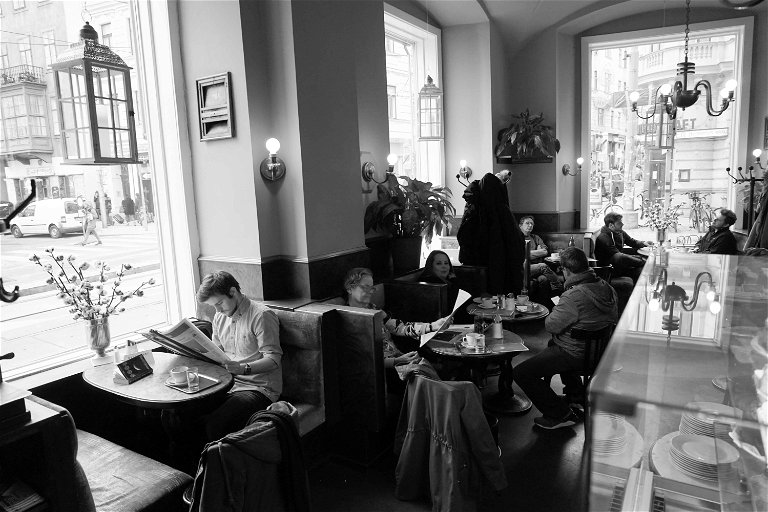
After the "headquarters of young literature", as Stefan Zweig called the "Griensteidl" in his memoirs "The World of Yesterday", opened on January 20, 1897 , its doors eventually had to close for good because the Palais Dietrichstein was demolished; the despair was great among the artists; "Our literature is facing a period of homelessness," lamented Karl Kraus with great pathos. At the same time, the 22-year-old used the end of this cult venue to thoroughly settle accounts with the coffee house culture of Viennese Modernism. In his lampoon "Die demolirte Literatur", which he published in the "Wiener Rundschau" shortly before the "Griensteidl" closed its doors, he took on one after the other each member of the circle of poets. His all-round attack was not without consequences.
On January 25, 1897, the "Illustrierte Wiener Extrablatt" reported on the last night of the "Café Griensteidl" as follows: "The loyal regulars celebrated the demise of the establishment with a magnificent funeral feast. After midnight, all supplies of food and drink were gone and only slaps were given. Otherwise the atmosphere was great." Karl Kraus had probably been slapped in the face by the young Austro-Hungarian writer Felix Salten ( "Bambi"), for whom the snappy text had been particularly infuriating. Salten probably gave the "well-known rascal" this slap on behalf of his colleagues, as can be seen from an entry in Arthur Schnitzler's diary from the day after: "Yesterday Salten slapped little Kraus in the face, which was greeted with joy by everyone."
"KAFFEEHAUS"
by Peter Altenberg, 1918
You have worries, be it this, -
be it those - to the coffee house!
She can, for some reason,
no matter how plausible the reason, will not come to you - to the coffee house!
You have torn boots - coffee house!
You have a salary of 400 crowns
and spend 500 - coffee house!
You are correctly frugal
and treat yourself to nothing - coffee house!
You are a civil servant and would like to be
Becoming a doctor - coffee house!
You won't find one that suits you - coffee house!
You're on the verge of suicide inside
- Coffee house!
You hate and despise people and yet you can't do without them - coffee house!
They won't give you credit anywhere - coffee house!
The "Café Central" - a world view
Contrary to Karl Kraus' predictions, Vienna's literati did not remain homeless for long after the closure of the "Griensteidl". He himself, Peter Altenberg, Egon Friedell and Alfred Polgar soon chose the "Café Central" in Palais Ferstel, just a few metres away, as their "legitimate successor". And it remained so until the end of the First World War. Alfred Polgar explained why: "Café Central is not a café like other cafés, but a world view, one whose innermost content is not to look at the world. Its inhabitants are mostly people whose misanthropy is as fierce as their desire for people who want to be alone but need company to do so."
The longing of these intellectuals to hide away from the world also explains why the many magnificent coffee palaces that opened on Vienna's Ringstrasse at this time had no appeal for them. With their large, wide window fronts and expansive street-side terraces, these coffee houses were not places of retreat. For the audience that gathered there, it was all about seeing and being seen. The "centralists" detested both. In any case, there was enough to experience at their "headquarters", albeit only on paper. The legendary coffee house offered its guests 235 newspapers and magazines in 23 different languages, 58 volumes of address directories and reference books of all kinds, not forgetting writing paper and ink to record every kiss with a muse.
As much as the literati loved their "Central", their feelings towards and for each other were ambivalent. In this microcosm, friendships and enmities flourished in equal measure. The latter connected the feature writer Anton Kuh with the "roving reporter" Egon Erwin Kisch. When Kisch was once asked what he would most like to die of, he replied: "A heart attack from the joy of Anton Kuh's death."
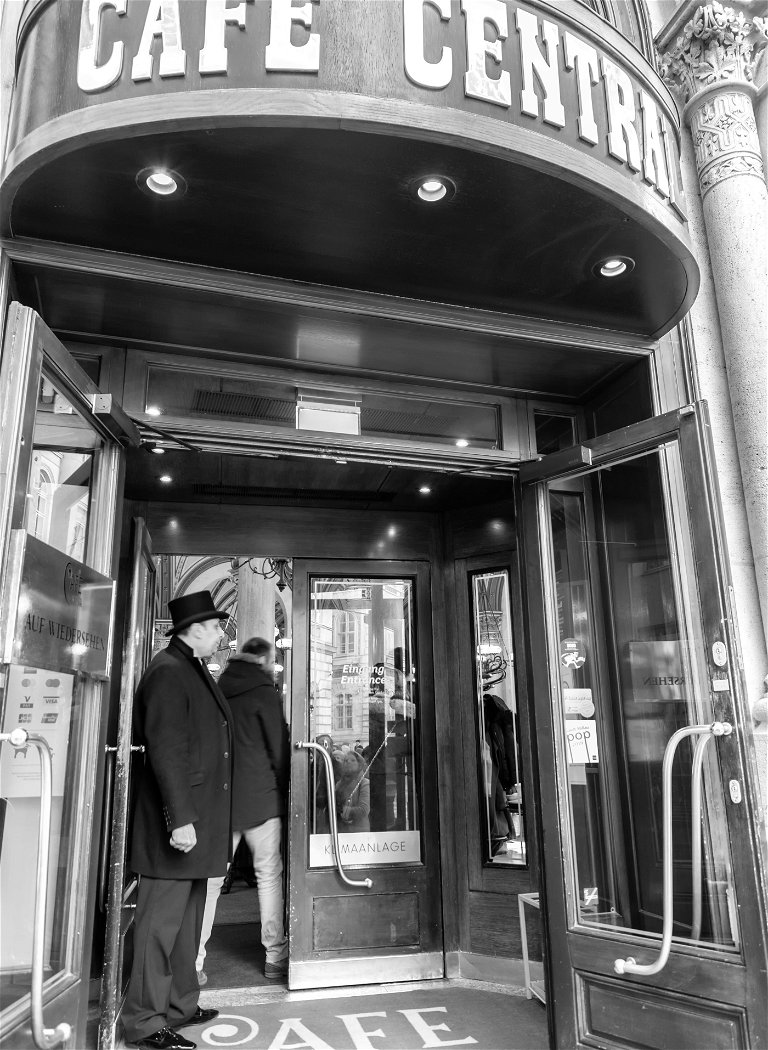
The new era - begins at "Hawelka"
Until the end of the First World War, the "Central" maintained its supremacy over all other artists' cafés. However, when Peter Altenberg died in 1919, almost the entire literary circle moved into the back room of the "Café Herrenhof", where Hermann Broch, Robert Musil, Franz Werfel and Joseph Roth also spent their days. What the "Central" had been for Altenberg, the "Herrenhof" was for Friedrich Torberg: "This coffee house was a central station for me on the path of my personal development.
In the dense circle of literary figures, the artists of life, surrounded by oddballs and originals, I was able to mature wonderfully, because the wisdom, wit and quick wit so wonderfully cultivated their style of conversation. I have always been attached to it." The stimulating gatherings came to an abrupt end: on 19 March 1938, the Herrenhof was "Aryanized" and closed. Most of its Jewish regulars fled abroad to escape the Nazis - many of them never returned.
After the war, the "Café Hawelka", this small, gloomy pub in Dorotheergasse, developed into a new trendy meeting place. Heimito von Doderer, H. C. Artmann and Hans Weigel, as well as visual artists such as Arnulf Rainer, Alfred Hrdlicka and Ernst Fuchs, found a home in the coffee house of Leopold and Josefine Hawelka, and the security they were looking for. "Do we need a place?" - with these words, the landlady always greeted her charges at the narrow entrance door. And Josefine always found one; the "Hawerl" couldn't be that full.
With a single pint, a small black beer with Slibowitz and homemade Buchteln, they forgot not only about their worries and hardships, but also about time. It actually seemed to stand still in the "Hawelka". Throughout his life, Leopold Hawelka refused to change or even renew anything in his small empire. "The coffee wouldn't be any better if the restaurant was modern," he was convinced.
"The Viennese Kaffeehouse"
Brandstätter publishing house
The most comprehensive and certainly the most beautiful treatise on the "coffee house institution" is the magnificent bibliophile volume "Das Wiener Kaffeehaus" from Brandstätter Verlag. On more than 300 pages, authors such as André Heller, Joachim Riedl, Herbert Lackner and Doris Knecht shed light on the history of these unique establishments; texts by former coffee house writers such as Alfred Polgar and Hans Weigl take us back to a time when world-class art and literature were still being produced at Einspänner and Buchteln. An absolute must for enthusiasts and those interested in history (€ 70).
No escape - for Thomas Bernhard
Thomas Bernhard was also drawn to the "Hawelka" from time to time, but much more often to the "Bräunerhof" a few metres away, where he observed the goings-on hidden behind newspapers. He felt very comfortable - and then again he didn't. "I've always hated the typical Viennese coffee house because everything about it is against me. On the other hand, for decades I felt right at home in the 'Bräunerhof', which was always completely against me (like the 'Hawelka')," he has his alter ego say in his book "Wittgensteins Neffe". The reader also learns the reason for his hatred of coffee houses: "I have always hated the Viennese coffee houses because I've always been confronted with my own kind, that's the truth, and I don't want to be confronted with myself all the time, especially not in the coffee house, where I go to escape myself. But since I suffer from coffee house addiction, I am forced to go into a literary coffee house again and again, even if everything in me resists it."
In fact, his "coffee house addiction" probably didn't bother the master of exaggeration too much. Regulars report that Thomas Bernhard was always in a good mood and smiling mischievously at his regular seat in the "Café Bräunerhof".
How the coffee came to Vienna
There are various legends about how coffee came to Vienna. The most common version says that the Ottomans left behind some sacks of coffee beans after their second unsuccessful siege of Vienna in 1683. The Viennese couldn't do anything with the green-brown balls, they thought they were camel food. But not Georg Franz Kolschitzky, who came from Poland. He is said to have known how to make a fragrant, tasty drink from the beans and soon became Vienna's first coffee brewer.
In reality, however, things may have been a little different. An Armenian merchant and courier named Johannes Diodato is said to have ensured that coffee beans were regularly brought to Vienna from the Ottoman Empire. He himself had been there for a long time and had learned how to make coffee. In 1685, he received the imperial privilege from the Habsburg court to serve coffee in the city tax-free for 20 years. He opened the first Viennese coffee bar at Haarmarkt (today Rotenturmstraße 14). In 1697, the Armenian Isaac de Luca from Erewan opened a coffee brewery in Vienna. In 1700, three more bourgeois coffee boilers from Armenia arrived, whom the Viennese mistook for Greeks. This is how the pick-me-up gradually began its triumphant advance in Vienna. In 1714 there were already 31 coffee houses, in 1879 there were 605 and in 1918 just over 800.

